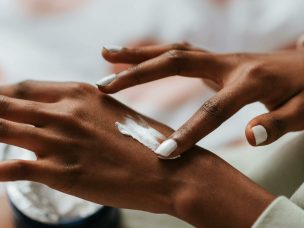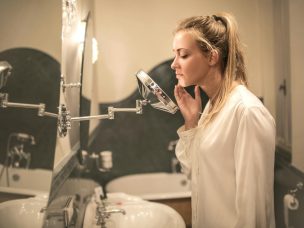For decolonizing atopic dermatitis lesions infected with Staphylococcus aureus, 2% ATx201 ointment is a safe and effective treatment.
Staphylococcus aureus is frequently associated with the colonization of lesions in atopic dermatitis (AD) patients. This may contribute to the severity and progression of AD in these individuals. This highlights the need for treatments that reduce the colonization of lesions with S. aureus without significantly affecting the commensal microbiome of the human skin.
This phase 2 clinical trial, published in Clinical and Translational Medicine, tested the therapeutic efficacy and microbiome resistance of 2% ATx201 (niclosamide) ointment in reducing S. aureus colonization in individuals with mild-to-severe AD. Niclosamide inhibits cell growth by acting on the proton motive force. This is consistent with the drug’s narrow minimal inhibitory concentration (MIC) distribution. Niclosamide has been effective in treating superficial skin infections caused by methicillin-resistant S. aureus infections.
A total of 36 patients diagnosed with mild-to-severe AD were included in this phase 2 trial. Results showed a significant reduction in the colonization with S. aureus following treatment with 2% ATx201 ointment twice a day, as signified by the analysis of quantitative colony forming units (CFUs). This trial included both methicillin-resistant and methicillin-sensitive strains of S. aureus. The AD patients in the ATx201 group demonstrated visual analog scale (VAS), investigators’ global assessment (IGA), and modified eczema area and severity index (EASI) scores of 4.52, 3, and 7.81, respectively, as compared to the corresponding baseline lesional scores in the vehicle group, which had a mean VAS pruritus score of 4.5, IGA score of 3 (55.6%), and mean modified EASI score of 7.86. The ointment was well tolerated by the study participants, who reported no safety concerns. Treatment with 2% ATx201 ointment was also associated with a significant increase in the Shannon diversity of the microbiome of the skin at day 7 of the treatment as compared to the vehicle group.
In summary, this trial demonstrates the therapeutic efficacy and safety of ATx201 in the treatment of AD by decolonizing skin lesions. Further studies with increased duration of follow-up and a larger study population are warranted for producing evidence regarding the therapeutic benefits of ATx201 in AD.
Reference
Weiss, A., Delavenne, E., Matias, C., Lagler, H., Simon, D., Li, P., Hansen, J. U., Dos Santos, T. P., Jana, B., Priemel, P., Bangert, C., Bauer, M., Eberl, S., Nussbaumer-Pröll, A., Anne Österreicher, Z., Matzneller, P., Quint, T., Weber, M., Nielsen, H. M., . . . Sommer, M. (2022). Topical niclosamide (ATx201) reduces Staphylococcus aureus colonization and increases Shannon diversity of the skin microbiome in atopic dermatitis patients in a randomized, double-blind, placebo-controlled Phase 2 trial. Clin Transl Med, 12(5), e790. https://doi.org/10.1002/ctm2.790










